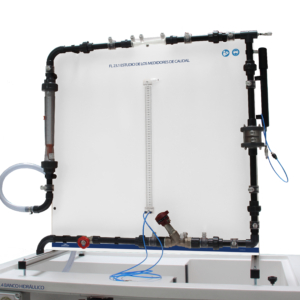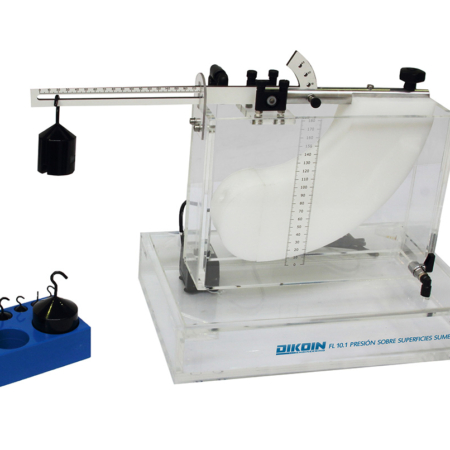FL 23.1 – Flow Meter Study
The goal of this item is the study and comparison of some of the different types of existing flow meters. The equipment incorporates gauges for more teaching and representative flow.
Description
These flowmeters are a Venturi tube, rotameter, diaphragm, angle seat valve and a Pitot tube placed in series to allow direct comparison of results.
Through the realization of some of the practices of this item has failed to understand the behavior of fluids against certain laws of statics, dynamics, thermodynamics.
They may implement general principles such as the conservation of mass, or energy in a simplified and easily.
Besides regulating valve with variable flow rates allow you to work according to the needs of the practice.
The results are displayed in both the water column manometer and the supplied electronic differential. Through these gauges pressure values are extracted at different strategic points of the equipment.
Learning Objectives
- Comparison of flow mmedida using the following:
- Rotameter.
- Venturi.
- Pitot tube.
- diaphragm
- elbow 90 °
- Valve adjustment
- Calculating the pressure drop of the following elements:
- Rotameter.
- Venturi.
- Pitot tube.
- diaphragm
- elbow 90 °
- Valve adjustment
- Demonstration of the Bernoulli equation in a venturi
- Estudy of static, dynamic and total pressures.
Technical Data
Inner diameters:
- Øinner main pipe = 25 mm.
Manometer:
- Water column gauge, measuring range 500 mm.a.
- ± 7000mBar electronic differential Manometer.
Pressure tappings:
All connections are quick and double seal.
Diaphragm:
- Diameter orifice plate Ø13 mm.
- Diameter orifice plate Ø15 mm.
Rotameter:
- Measuring range 150-1500 l / h.
Venturi Tube:
- Ø12 mm diameter throat.
- Bore Ø21,2 mm upstream.
- Upstream taper 22°.
- 7º downstream taper.
Other elements:
- Pitot tube.
Requirements
- Hydraulic Bench FL 01.4 ó Hydraulic Unit FL 01.1.









